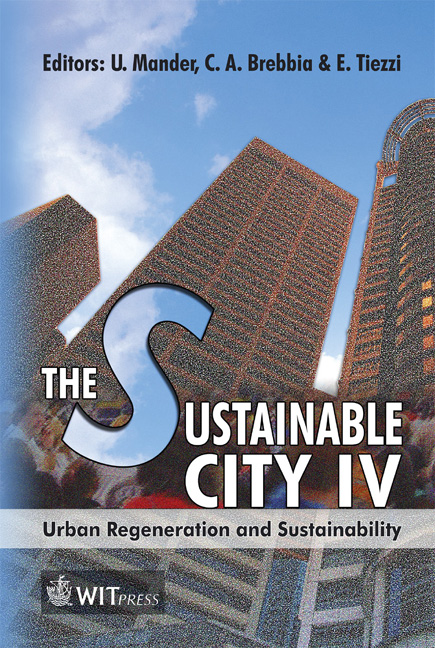When Does Stacking Become Vertical Sprawl?
Price
Free (open access)
Transaction
Volume
93
Pages
10
Published
2006
Size
1,990 kb
Paper DOI
10.2495/SC060271
Copyright
WIT Press
Author(s)
I. S. Y. Hwang
Abstract
More cities are expanding and aspiring to expand vertically. Many are advocating densification/intensification as a sustainable alternative to the urban sprawl of the west. Is densification the cure-all snake oil to problems associated with endless sprawl and leap-frog suburbia? This paper uses Hong Kong – one of the most dense cities in the world – to discuss whether the vertical city is a sustainable solution to human settlements. Like any other concept and theory, the implementation requires a much deeper and comprehensive understanding of the process of actualisation. Without this process, instead of a leap-frog suburb, a skyscraping suburb will be created, instead of the automobile, people will be highly dependent on elevators and escalators and most importantly, this may have already started to occur in cities around the world. This paper discusses the difference between stacking and vertical sprawl and examines the notion of the vertical sprawl through examples of the vertical cul-de-sacs and vertical gated communities already existing in Hong Kong and calls for more rigour in approaching densification. Keywords: vertical sprawl, stacking, cul-de-sac, gated communities, urban expansion, high-rise, high density, compact city. 1 Introduction Sustainability has been ‘the topic’ across all disciplines over the last few decades. People in business, politics, science, anthropology talk about it and it is probably one of the most used, abused and misused words of this century. Discussions on cities are not an exception. It is impossible to find a book on cities or urbanism which does not mention the word ‘sustainable’ or ‘sustainability’ once. This indicates the importance and hence the appropriate attention given to the issue of sustainability in the discussion of cities. In the
Keywords
vertical sprawl, stacking, cul-de-sac, gated communities, urban expansion, high-rise, high density, compact city.





